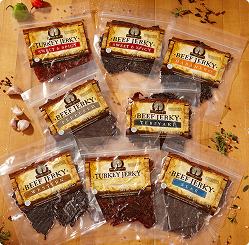Tasty Facts on Snacking in America
While snacking was once an occasional habit of some Americans, it has now become a way of life for most. Nearly 94 percent of all Americans snack at least once per day, according to a 2015 Mintel survey, up from 64 percent the previous year. In 2015, a full 50 percent of Americans were snacking two or three times per day, with 70 percent saying pretty much anything and everything can be considered a snack.
Snacks as Meals
The perpetual increase in busy, on-the-go lifestyles plays a role in snacking. Rather than solely serving as something to eat between meals, snacks are often being eaten instead of meals. Roughly 45 percent of people worldwide said they use snacks as meal replacements, a 2014 Nielsen survey reported.
Breakfast was the most frequent meal replaced by a snack, with 52 percent saying they sometimes snacked in lieu of the day’s first meal. An estimated 43 percent said they’ve replaced lunch with a snack, while 40 percent said they’ve snacked instead of eating dinner.
Snacks for Cravings, Emotions, Functionality
Meal replacement may be a major reason Americans turn to snacking, but it’s certainly not the only one. A notable 62 percent of Americans snack to satisfy a craving, the Mintel survey said, while people also snack for emotional or functional reasons.
Millennials are the most likely to turn to snacks for emotional or functional support, with 27 percent snacking from boredom and 17 percent snacking from stress. On the functional side of things, 39 percent of millennials say they snack to keep up their energy levels and focus throughout the day.
While generations that came before the millennials grew up in a time when snacking wasn’t as prevalent, they still turn to snacks to soothe emotions. In the case of older generations, 25 percent turn to snacks because they’re bored while 16 percent do the same when they’re stressed.
Snack Choices
Americans are not only changing how frequently and why they snack, but they’re also making a shift in the types of snacks they choose. The Mintel survey saw 33 percent of respondents say they’re snacking on healthier options than they had been the previous year.
Some are taking the healthy snack habit even further by eating only healthy snacks, another growing trend. In 2009, the proportion of U.S. adults who ate only healthy snacks was at 25 percent. By 2014, that number had increased to 29 percent.
Healthy snack choices are being shared by parents with their children, as well. Nearly 30 percent of parents reported giving healthier snacks to their children, with many wishing there were more snacks that came in convenient packages, such as re-sealable bags or individual portions. Parents aren’t the only ones craving convenient snacks, as 77 percent of Americans prefer snacks that are ready-to-eat over those that have to be prepared. Jerky, with its unmatched portability and road-trip-readiness, is a natural fit for consumers’ tastes.
Finding a Healthy Snack
Some healthy snacks are obvious, like fresh fruit and raw veggies. But those options aren’t always easily available for folks in a hurry or on the go. Searching for a healthy snack under limited circumstances can be achieved by using a two-part plan.
The first part of the plan is to take a glance at the ingredient label to review the first five ingredients on the list. The goal isn’t to memorize, or even fully understand, everything on the label. It’s to get a general idea of what makes up the bulk of the chosen snack.
The second part of the two-part snack plan is to review four different categories on the nutrition label. These categories are:
- Calories
- Fat (grams)
- Carbohydrates (grams)
- Protein (grams)
Calories
The amount of calories required to maintain, lose or gain weight varies individually, based on gender, age, height, weight and activity levels. On a broad level, the average woman needs about 2,000 calories per day to maintain her weight, while the average man requires about 2,500 calories per day.
Fat
Fat comes in two varieties: saturated fat and unsaturated fat. Trans fat is a type of unsaturated fat with detrimental health effects. Nutrition labels may list the total fat in a product, or list a breakdown of the different fats. Fat provides energy in the form of calories. It also stores excess energy for later use once calories from carbs are used up. Each gram of fat contains 9 calories, which is included in the overall calorie count.
Carbohydrates
Commonly called carbs, carbohydrates include sugars, starches and fiber. Carbs provide the body with glucose, which the body converts into energy to support physical activity and bodily functions. Carbs are also known for providing a quick energy burst that may be followed by an energy dip.
Protein
Protein serves a variety of functions in the body, including providing energy and serving as an enzyme to start metabolism, gene growth, gene repair and other bodily reactions. Snacks with high amounts of protein serve as an energy source that can stave off hunger pangs.
Once the two-part plan has been implemented, a few other factors come into play. People are more apt to choose snacks that are convenient, which means it’s important for snacks to be easy to purchase and easy to eat. Taste is another factor that ranks high on the snack choice list, as people are not going to be all that excited or perhaps even willing to eat a snack that simply doesn’t taste good.
Snack Comparisons
When faced with a batch of snacks that are all tasty and convenient, the choice may come down to which snack presents the healthiest option. We compared a number of popular snacks to see how they ranked against our jerky, one of Mahogany Smoked Meats favorite snacks for obvious reasons.
Beef Jerky
Beef jerky is tasty, convenient and has a major claim to fame. It has the highest protein levels out of all of the popular snacks we reviewed, making it an ideal choice for sustaining energy and staving off hunger pangs.
Size: 1.5 oz.
Calories: 174
Fat: 10.9 g
Carbs: 4.7 g
Protein: 14.1 g
Beef Jerky vs. Other Snacks
With protein content as the main gauge, the other snacks are listed in descending order based on the amount of protein each contains.
Read on for the full article or click to view Beef Jerky Nutrition vs. Other Snacks as an Infographic.
Colby Cheese, Cubed
Colby cheese has a notable level of protein, but its need for refrigeration takes away some of its convenience for on-the-go snackers.
Size: 1.5 oz.
Calories: 167.5
Fat: 13.7 g
Carbs: 1.1 g
Protein: 10.1 g
Peanuts
Nuts are notorious for having a solid protein supply, although the amount in peanuts is less than half that found in beef jerky.
Size: 1 oz.
Calories: 165.8
Fat: 14.1 g
Carbs: 6.1 g
Protein: 6.7 g
French Fries
With more than 450 calories per medium-sized serving, French fries are a snack that should be chosen sparingly unless the goal is gain weight.
Size: Medium portion
Calories: 458.3
Fat: 24.7 g
Carbs: 53.3 g
Protein: 5.8 g
Sunflower Seeds
Small, handy and fueled with moderate levels of protein, sunflower seeds may be tasty but not necessarily all that satisfying or filling.
Size: 1 oz.
Calories: 162.7
Fat: 14.1 g
Carbs: 6.8 g
Protein: 5.5 g
Chocolate Ice Cream
Chocolate ice cream falls into a snack that doubles as a desert, with a rather high dollop of calories.
Size: 1 cup
Calories: 285.1
Fat: 14.5 g
Carbs: 37.2 g
Protein: 5.0 g
Cashews
Buttery and flavorful, cashews have good levels of protein, but carb levels that are double the carbs in beef jerky.
Size: 1 oz.
Calories: 162.7
Fat: 13.1 g
Carbs: 9.3 g
Protein: 4.3 g
Trail Mix
Nuts, raisins and other goodies in trail mix give it a notable amount of carbohydrates, which is not always a coveted thing.
Size: 1 oz.
Calories: 131
Fat: 8.3 g
Carbs: 12.7 g
Protein: 3.9 g
Fig Bars
Processed fig may be an acquired taste for some, and that taste comes with high calories and high carbs.
Size: 6
Calories: 334.1
Fat: 7.0 g
Carbs: 68.1 g
Protein: 3.6 g
Chocolate Pudding
Another desert-type snack, chocolate pudding can be messy. It also has five times the amount of carbs as beef jerky.
Size: ½ cup
Calories: 150.3
Fat: 4.5 g
Carbs: 25.8 g
Protein: 3.1 g
Chocolate Bar
The chocolate bar packs on a wallop of calories and carbs without a significant protein payoff.
Size: 1.55 oz.
Calories: 225.7
Fat: 13.5 g
Carbs: 26.0 g
Protein: 3.0 g
Cheese and Crackers
Cheese and crackers do involve a bit of preparation, taking away from the convenience. They are also much higher in carbs than protein.
Size: 1 oz.
Calories: 142.6
Fat: 7.2 g
Carbs: 16.5 g
Protein: 2.9 g
Donut
Snacking on a single donut leaves snackers full of calories and carbs, potentially with a sugar rush that burns out fast into fatigue and huger.
Size: One
Calories: 250.2
Fat: 11.9 g
Carbs: 34.4 g
Protein: 2.7 g
Pretzels
Pretzels are ideal for their low fat levels, but not their protein power.
Size: 1 oz.
Calories: 108
Fat: 1.0 g
Carbs: 22.5 g
Protein: 2.6 g
Cheese Puffs
These airy, cheese snacks aren’t always known for being filling, unless it’s filling fingertips with a messy orange stain.
Size: 1 oz.
Calories: 157.1
Fat: 9.8 g
Carbs: 15.3 g
Protein: 2.2 g
Barbecue Chips
Potato chips ranks as one of America’s favorite snacks, but the love may be based on texture and taste rather than nutritional content.
Size: 1 oz.
Calories: 139.2
Fat: 9.2 g
Carbs: 15.0 g
Protein: 2.2 g
Popcorn, Popped in Oil
Popcorn can be a fairly healthy snack, as long as it’s not slathered in butter or popped in oil. Oil-popped popcorn sports a mid-range fat content and a messy, greasy feel.
Size: 2 cups
Calories: 110
Fat: 6.2 g
Carbs: 12.6 g
Protein: 2.0 g
Tortilla Chips
Salty, crunchy and tasty, tortilla chips have a notable amount of fat. They also generate thirst, which many may quench with a detrimentally sugary soda.
Size: 1 oz.
Calories: 142
Fat: 7.4 g
Carbs: 17.8 g
Protein: 2.0 g
Graham Crackers
With a serving size of two solitary crackers, it’s doubtful a graham cracker snack would sate anyone for very long. Low protein levels and notable carbohydrate levels can add to the quick return of hunger.
Size: Two large crackers
Calories: 118.5
Fat: 6.2 g
Carbs: 21 g
Protein: 1.9 g
Raisins
Low in fat yet significantly high in carbs, raisins are an acquired taste for some. Their low protein levels are another detriment.
Size: ¼ cup
Calories: 123.8
Fat: 0.2 g
Carbs: 32.6 g
Protein: 1.3 g
Jelly Beans
While jelly beans are extremely low in fat, they are also totally devoid of protein. Their sweet, sugary taste may also not be as satisfying or filling as a meatier snack.
Size: 30 beans
Calories: 121.1
Fat: 0.2 g
Carbs: 30.7 g
Protein: 0 g
Conclusion
As snacking in America continues to grow in popularity and importance, the evolution toward healthier choices is expected to continue. Beef jerky is poised to maintain a solid slot on the list of snacks that are tasty, convenient and come with notable nutritional value.
Sources:
https://www.sparkpeople.com/resource/food_lists_snacks.asp
https://www.webmd.com/food-recipes/features/best-and-worst-snacks#1,
http://www.mintel.com/press-centre/food-and-drink/a-snacking-nation-94-of-americans-snack-daily
https://www.usatoday.com/story/money/business/2014/09/29/snacking-consumer-eating-habits-nielsen/16263375/
http://www.mintel.com/press-centre/food-and-drink/top-reason-us-consumers-snack-is-to-treat-themselves
http://www.nielsen.com/us/en/insights/news/2017/individual-snacking-categories-on-the-rise-in-the-us.h










